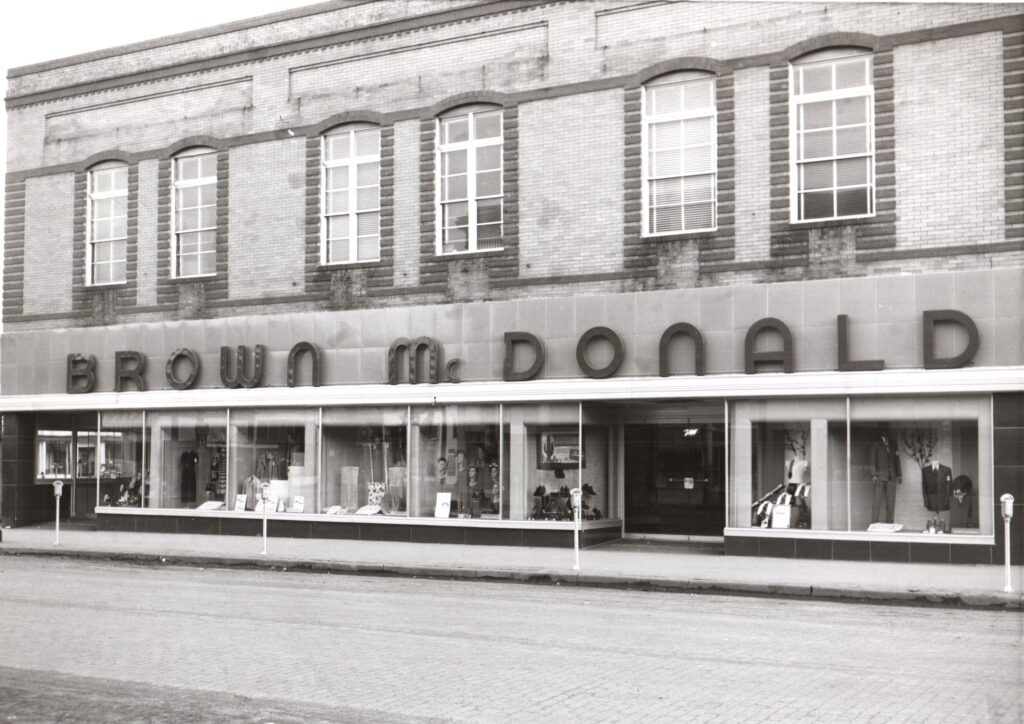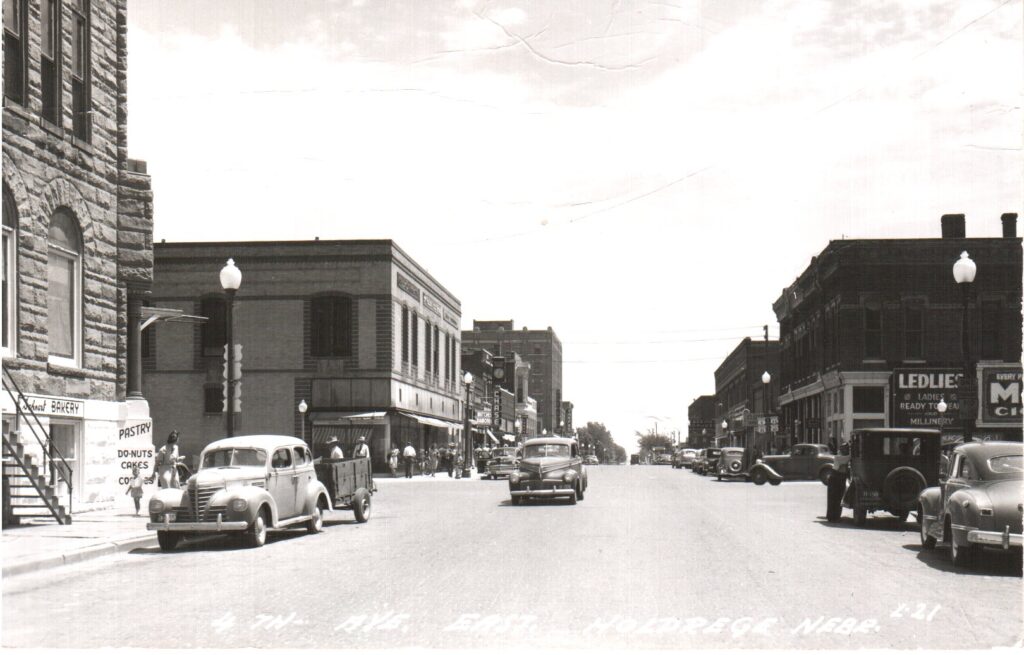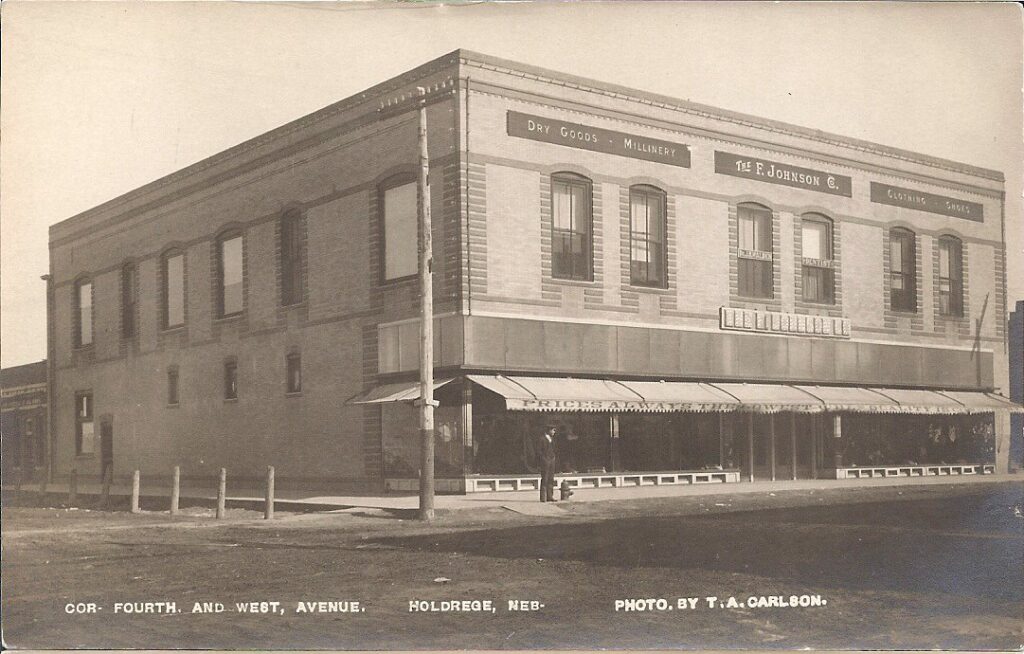A little slice of history
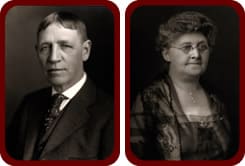
Frank worked industriously at A.P. Johnson & Company and in ten years he was taken in as a partner. Four years later he decided to strike out on his own and move west.

Frank’s business grew as Holdrege grew. Farmers were drawn to the area by large, flat tracts, rich black earth, and a relatively benign climate. Holdrege became a retail center for the area. By 1905 Frank had outgrown his original frame structure and determined to build the finest retail emporium to be had.
First in the world
At this point, Frank’s story gets tied up with the story of architect Francis Plym, who had also immigrated from Sweden, worked hard, and made a success of himself.
Plym is credited with inventing and patenting the resilient metal frame for windows. Prior to Plym’s invention, plate glass windows—such as those inn retail stores—were set in wooden frames. Moisture ran down the glass and rotted the wood; the wood frames failed to “give” when the building moved or settled, cracking the glass.
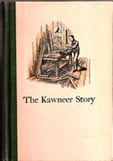
Plym went on to found the Kawneer Company, which was later purchased by Alcoa, where his designs contributed to their success. Click here to read an excerpt from The Kawneer Story, a history of the corporation.
A daylight shopping emporium
As soon as the building was completed, the F. Johnson Company moved in and continued to grow. The large windows in their metal frames made the store particularly appealing to shoppers. A newspaper account from 1906 describes the store this way:
This building was erected in 1905 to be the home of the largest and most up-to-date store in central western Nebraska. Store rooms have a frontage of 80 feet and a depth of 100 feet, designed and built to give the public a daylight shopping emporium … where colors, patterns and designs can call be shown as they are, which means much to all lady and other purchasers. The floor areas of this store are increased manifold by a system of show cases , shelf cabinets and display stands. Each sales station has at hand an automatic cash carriage. More than forty clerks and helpers are on duty.
Each department is set apart in sectional space all of its own. No visitor to Holdrege should miss an inspection of this store, because in the object lesson given is proof of what rich farm lands and a thrifty people can make possible.

The 5000 piece anniversary cake

For his 35th anniversary in 1919, he commissioned a 5000-piece anniversary cake weighing 1475 pounds and containing capsules with small anniversary gifts. Wedge-shaped cake pans had to be fabricated by a local tinsmith for the occasion.
In a memoir by Frank Johnson’s grandson, also called Frank Johnson (click here to read the entire excerpt), the younger man remembered that his grandfather was a skillful merchant.
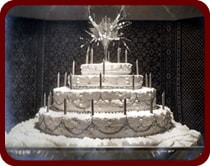
A sterling citizen
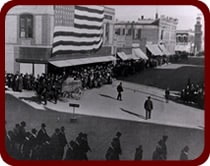
According to Frank Johnson the younger, his Aunt LuLu told him Frank was generous to a fault, often inviting “customers who had travelled many miles to shop in Holdrege home to his own home for the noon meal”, and he “nearly always had a helping hand for someone in distress.” Anna, never knowing if she would be serving ten or twenty, prepared for company every day. She was widely known to be an excellent cook and hostess.
A dream fulfilled
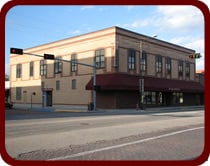
The building was remodeled into office suites in the 1980s and then thoroughly modernized in 2007 and again in 2011. It is today, as it always was, a prestigious address in Holdrege.
But maybe now, when you walk through the big double doors, you’ll see yourself, just for an instant, walking into the nicest store in town.

